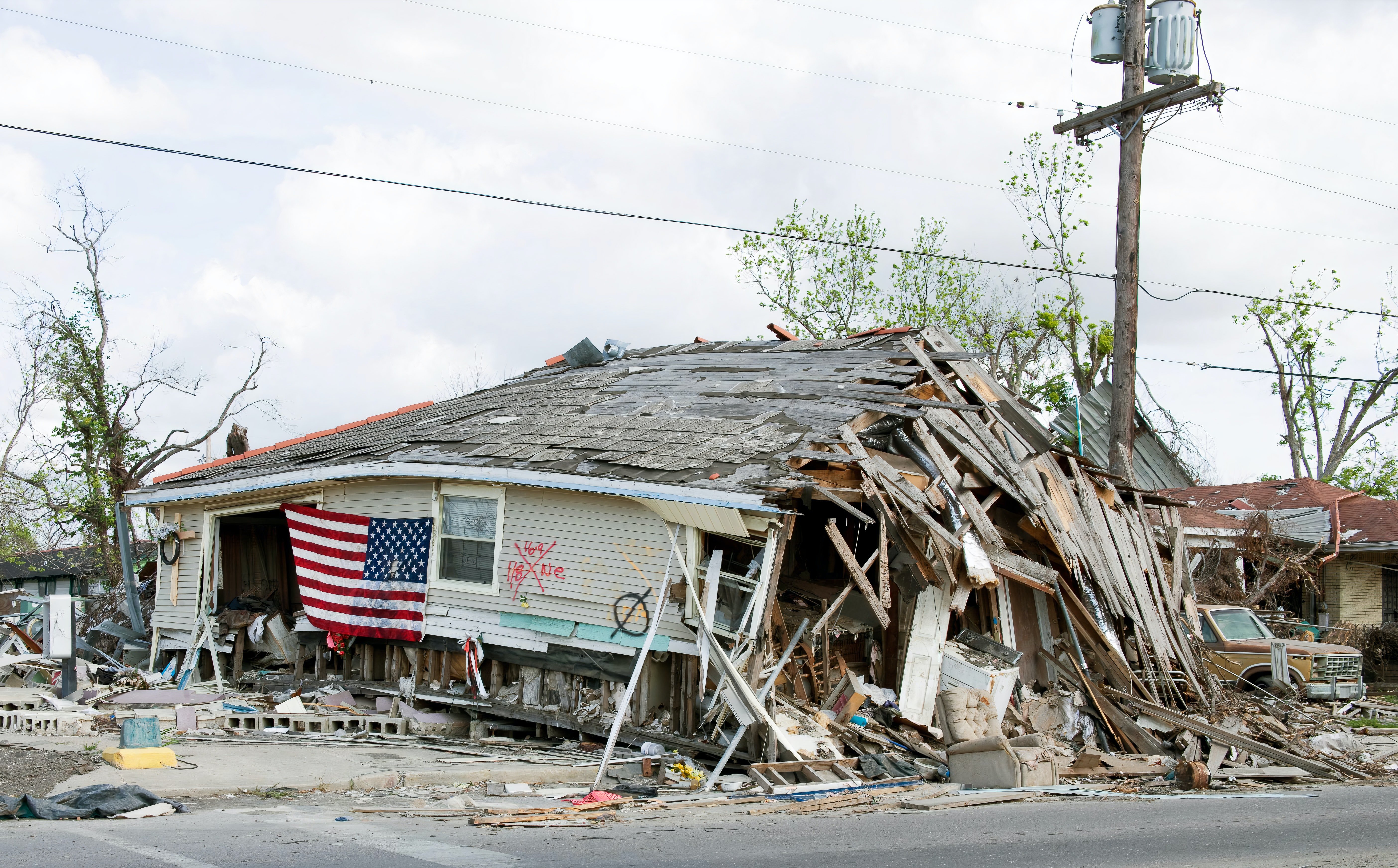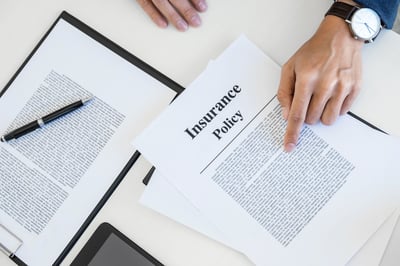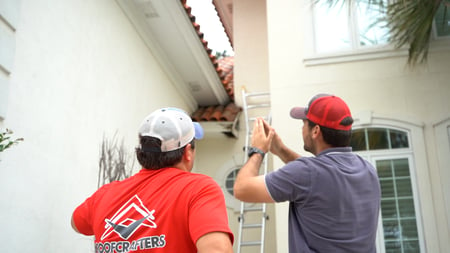Storm Damage and Your Roof: What to Know and How to Prove It
July , 2025 | 8 min. read
By Kevin Mills

If storms are common where you live, knowing what to do after one hits is crucial. Maybe you’ve just moved to a storm-prone area, or you’re visiting and got caught in some bad weather. Either way, the aftermath can be overwhelming.
We get it. Storms can be scary. Here in Florida, we’ve seen it all. From routine afternoon showers to intense tropical systems. These weather events can be unpredictable and stressful, especially when your home is at risk.
At RoofCrafters, we’ve been repairing storm-damaged roofs for over 30 years. We’ve seen firsthand how damaging storms can be, and how important it is to act fast and smart.
Fortunately, there are clear steps you can take to protect your home and roof. Whether you’re dealing with damage right now or preparing for the next storm, you’re in the right place. In this article, we’ll walk you through exactly what to do after a storm hits and how to keep your roof safe in the future.
Identifying Storm Damage on Your Roof
Storm damage is what’s left behind after extreme weather events, and your roof is usually the first part of your home to take the hit. The most common weather culprits include:
- Heavy rain and thunderstorms
- Hailstorms
- Windstorms
- Ice storms
High winds, hail, and driving rain can wreak havoc on your roofing system. Shingles can be ripped off, water can find its way in through weak spots, and ice can create all kinds of structural issues.
Safety First: Post-Storm Precautions
After a storm, prioritizing safety is crucial. Nobody needs to put their life in danger over property damage. Here are some vital steps to follow:
- Prioritize Safety: If the storm has compromised the structural integrity of your home, avoid going inside. The risk of a collapse is real. Wait outside or in a safe area until professional help arrives.
- Check Plumbing: Inspect your pipes and water lines for any damage. If necessary, shut off all valves and faucets in your kitchen and bathroom. If you suspect any damage to your waterline or contamination, refrain from using the water.
- Beware of Hazards: Storms can leave dangerous debris like glass shards and exposed nails. Always wear sturdy shoes when stepping outside to inspect damages.
- Steer Clear of Water Bodies: Post-storm, avoid areas with standing water. This includes flooded basements or accumulated water outdoors. Such water could be contaminated or electrified from downed power lines. Keep children away from these areas for their safety.
- Ventilate in Case of Gas Leaks: If you smell gas or suspect a leak, open all windows and doors for ventilation and exit the property. Immediately contact the gas company or relevant authorities to address the situation.
Recording Storm Damage: Essential Steps

You want to document by taking photos of all the damage you can see and then get your homeowner’s insurance paperwork handy. This will help make it easier to file a claim on your homeowner’s insurance. Being proactive here can go a long way. Documenting damage thoroughly is a key step after a storm. Here's how to do it effectively:
- Capture the Damage: Take clear photos or videos of all visible damage. This includes damages to your roof, windows, doors, and any other affected areas of your property.
- Gather Insurance Information: Have your homeowner's insurance documents accessible. This will streamline the process when you file a claim.
- Be Proactive: Being proactive in documenting damage can aid in the insurance claim process. Don't overlook this crucial step.
- Consult a Professional: If you're uncertain about the extent of roof damage. It's wise to consult with your preferred local roofing contractor before filing an insurance claim. They can provide a professional assessment, which is invaluable in understanding the full scope of the damage.
Initiating the Insurance Claim Process
When you're certain the repair costs will exceed your deductible. Your ready to contact your homeowner's insurance provider.
Here's how to proceed:
- Notify Your Insurer: Inform your insurance company about the storm damage. Be prompt and precise in your communication.
- Share Documentation: Provide the photos and detailed assessment you've gathered. This evidence is crucial for a smooth claim process.
- Claim Number and Adjuster Assignment: Your insurer will give you a claim number and assign a field adjuster. The adjuster will check the damage to determine the settlement amount needed to restore your home to its pre-storm condition.
- Stay Informed and Responsive: Keep track of your claim status and be available for any extra information needed for the adjuster's assessment. Prompt responses can expedite your claim process.
Selecting the Right Contractor for Storm Damage Repairs

Pick a reputable contractor that has experience with doing insurance claim work. Professional storm damage contractors are not only experienced in insurance mitigation, but they're also efficient, prompt, and helpful in reducing the overall stress that happens after your home gets damaged.
Most experienced contractors coordinate directly with your insurance provider as well, reducing the added stress of ensuring that everything is streamlined so as not to leave any information off the claim.
Moreover, just be wary of scammers or door-knockers. Many service providers are not certified and seek to benefit from vulnerable homeowners after a storm. If any service provider asks for payment upfront, please don't hire them to restore the damage for you.
Preparing for Future Storms
To prevent future storm damage, invest in a great professional service provider. Choose one that uses the best products, latest tools, and installation methods to repair your home – especially when it comes to roof repair.
You can even have emergency measures in place for the next storm as follows:
- Invest in sandbags before the next storm arrives to prevent water from accumulating or coming indoors. You can even cover your windows and doors with a tarp to prevent seepage.
- Check for mold in warm and damp conditions a few days after the storm and have it removed right away. Mold outbreaks can be hazardous to health if left untreated.
- Protect your circuit breaker by having an impermeable structure built over it. This will prevent water leaks from coming in contact with the circuit breaker and increase the risk of fire.
- Regularly trim and prune your trees. If you have trees that are prone to being uprooted and falling, have them removed by a landscape service provider.
- Invest in a high-quality submersible water pump – this can help you draw out large amounts of water that may have seeped into your home during a storm or heavy rain spell.
Taking these proactive measures can significantly reduce the impact of future storms, keeping your home and family safer. Let's discuss the DIY repairs next.
After the Storm: Your Action Plan

Storm damage can feel like a lot to deal with, especially if your roof took the brunt of it. Here’s a quick post-storm checklist to help you take control:
- Keep important contacts handy (roofers, insurance, utilities)
- Act quickly! Time matters when it comes to storm damage
- Get emergency tarping if needed to prevent further damage
- Stay informed and prepared. The more you know, the better off you’ll be
Professional Storm-Damaged Roof Repairs
By knowing what to do after finding storm damage, you can save unnecessary costs and worry. Acting fast and not letting the repair and restoration process get delayed can play an important role in maintaining the structural integrity of your property.
This is exactly what you want if you wish to keep yourself and your loved ones safe. If you have questions about insurance related to roof replacement, we'd recommend that you check out our article: Insurance Roof Replacement Questions You Should Know
Our family at RoofCrafters has 30 years of experience tackling storm-damaged roofs. If you live in one of our many service areas and would like to have one of our estimators come check your roof. Click the button below and we'll see you soon!
My name is Kevin Mills, and I am the lead estimator for RoofCrafters’ Tampa division. I’m originally from Michigan, and I enjoy hunting, fishing, and spending any free time outdoors. What I’m most passionate about, though, is helping business owners and homeowners alike achieve their roofing goals, all while providing a seamless customer journey.



